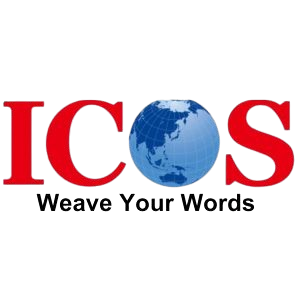Cracking the Code: Surviving the Lost in Translation Culture Shock
Speak their language, not just their words.

Let’s assume, you’re in Tokyo, and have prepared for a crucial business meeting with Japanese investors.
You’ve invested considerable effort into crafting a compelling pitch for your innovative product. Your presentation is meticulously designed, and each slide is carefully prepared to highlight the key benefits and data points of your product.
You’re ready.
As you begin, you notice a stark contrast between the energy in the room and what you expected. The atmosphere is noticeably reserved.
The nods you receive are polite but lack the enthusiastic engagement you anticipated. It’s as though there’s a subtle but palpable barrier between your presentation and the investors’ reactions.
On the surface, everything seems in order. You’re delivering your pitch in English, and you’ve done your homework to ensure that your message is clear and engaging. Yet, despite your efforts, there’s a disconnect.
So, what’s happening here? Why do think there is a disconnect here?
The reasons could be :
Different Communication Styles: Japanese culture values indirect communication. Reserved responses might be a polite gesture, not disinterest.
Formality and Respect: Emphasizing formal greetings, titles, and respectful language is crucial. Missing these may seem disrespectful.
Punctuality and Structure: Clear structure and punctuality are vital. Any deviation could be seen as unprofessional.
Non-Verbal Communication: Body language, eye contact, and attire matter. Misaligning with local cues could create misunderstandings.
Building Trust: Trust is key. Failing to show commitment to long-term partnerships may weaken your message.
Business Etiquette: Following local practices, like the correct exchange of business cards, is essential to avoid disconnect.
Cultural Norms: Japanese investors may prefer humility and collaboration over self-promotion.
Language Barriers: English terms may not fully translate, causing potential misunderstandings.
Group Harmony: Group harmony is valued; direct opinions are often avoided, leading to more reserved feedback.
Cultural Adaptation: Demonstrating an understanding of Japanese culture shows genuine interest and effort, preventing disengagement.
The reason for the disconnect could be ‘any’ or ‘all’ of these.
Understanding and addressing these factors can help you bridge the cultural gap and improve the effectiveness of your business presentation in Japan.
As per statistics, nearly 70% of international business deals fail due to miscommunication and cultural misunderstandings. Research shows that companies lose millions annually because they do not understand the cultural context of their target markets.
Let’s crack the code and understand from the start
Table of Contents
What is a Culture Shock in Business?

Culture shock is for more than just travellers exploring a new city or tasting unfamiliar cuisine.
In business, it’s that unsettling feeling of navigating an environment where the rules, norms, and languages are different from what we’re used to. It’s more than just a moment of confusion — it’s an emotional rollercoaster that can lead to misunderstandings, mistakes, and missed opportunities.
It’s just like trying to play a game without knowing the rules. You might recognize some moves, but the overall strategy? Completely unknown.
And that can be a costly gap to fill, especially in high-stakes business situations.
Cultural Barriers for Business Communication: What Are They?
Cultural barriers can sneak into any conversation, turning a potential deal into a missed opportunity. Few major challenges are:
Language Differences:
Even when everyone speaks the same language, subtle meanings can get lost.
Though English is widely used in business; nuances, idioms, and expressions can vary greatly.
Even fluent speakers may miss subtle meanings, leading to misunderstandings.
Moreover, the pressure to speak in a non-native language can create anxiety, reducing effective communication.
To address this, consider offering multilingual materials or translation services, and encourage clarification when needed.
Non-Verbal Communication
Gestures, facial expressions, and body language can mean different things in different cultures.
While some non-verbal cues, like smiling, might seem universal, many gestures, facial expressions, and body language signs carry different meanings across cultures.
For example, direct eye contact is seen as confident in Western cultures but can be perceived as rude elsewhere. To bridge this gap, spend time learning about your client’s non-verbal communication norms and adjust your behavior accordingly.
Business Etiquette
From how you exchange business cards to how you address someone in an email — small details matter.
Greeting styles or gift-giving traditions may seem trivial but can have a big impact on first impressions and relationship-building.
Disregarding these practices can inadvertently offend or signal a lack of respect.
To overcome this, do your homework on local customs and practices and be mindful of cultural etiquette to build trust and rapport.
Time Perception
In some cultures, punctuality is paramount, while in others, a meeting might start “whenever everyone gets there.”
While some may argue that differences in time perception are minor, they can significantly affect collaboration and scheduling.
For instance, in cultures where punctuality is a sign of respect, arriving late can damage relationships.
In contrast, cultures that value flexibility in their use of time may find rigorous scheduling stiff or impersonal.
To manage this, set clear expectations around timing and deadlines that respect both parties’ cultural norms.
Decision-Making Styles
Some prefer consensus and lengthy discussions; others make quick, top-down decisions.
Decision-making processes deeply rooted in cultural values can influence deal outcomes.
For instance, cultures that prioritize consensus-building may perceive a quick, authoritative decision as hasty or authoritarian.
Conversely, a top-down decision-making culture may find consensus-driven approaches slow and frustrating.
To mitigate this, understand your counterpart’s decision-making culture and adapt your approach to match their expectations, allowing for smoother negotiations.
Why is Effective Communication So Important in Global Business?
When communication falters, so does business. It’s as simple as that.
Effective communication not only promotes cooperation and keeps everyone in the loop, but it also builds trust. Without it, misunderstandings can derail projects, strain relationships, and damage reputations.
In global business, where every word and gesture is amplified, communicating clearly is like laying a solid foundation.
Without it, everything built on top could collapse.
To Know more about Japanese communication style in business Read here
How to Overcome Culture Shock in Business?
Start by understanding that culture is the invisible backdrop of every conversation.
Invest in Translation and Localization Services
Translation is more than just converting words; it is also about customising messaging to resonate with different cultural contexts. Localization goes a step further by aligning content with cultural nuances, making it more relatable.
Educate Your Team
Offer cultural sensitivity training to help employees understand different customs, communication styles, and expectations. Education can make a big difference.
Hire Local Experts
Having someone who understands the local landscape can help navigate complexities, avoiding common pitfalls.
Practise Active Listening
Don’t just hear — truly listen. Clarify doubts, ask questions, and seek feedback to ensure messages are understood as intended.
By implementing these strategies, you can turn culture shock into cultural fluency, making your business a local success, even on the global stage.
FAQs: Lost in Translation Culture Shock
Cultural shock occurs when differences in language, cultural norms, and identity create confusion, discomfort, or misunderstanding in a new environment.
Language barrier culture shock happens when communication challenges arise due to differences in language, leading to misunderstandings and frustration.
Culture affects communication in business by influencing language, non-verbal cues, decision-making styles, and expectations, which can lead to misunderstandings if not properly navigated.
Reverse culture shock is the result of returning to one’s home culture after being exposed to another, which can produce confusion, annoyance, and distorted perspectives.
A strategy for overcoming cultural barriers includes learning about the other culture, being open to different perspectives, and adapting communication styles accordingly.
Signing off: Business Translation Services
As you venture into new markets and culture diversities, ask yourself:
Are your messages genuinely reaching your audience, or are they getting lost in translation? It’s not just about speaking the right language; it’s about understanding the subtleties, the unspoken cues, and the deeper cultural contexts that shape every interaction.
Our translation and localization services offer tools and strategies to bridge these gaps, but the first step is to reflect on how open you are to change.
What possibilities could emerge if you adapted your communication style, embraced cultural differences, and viewed these challenges as opportunities for growth?
The world of global business is filled with complexities, but it’s also rich with potential for those who dare to go beyond the surface.
How will you turn cultural barriers into bridges for success?
Don't want to get lost in translation culture shock?
Reach out today, and together, let’s discover new ways to connect, communicate, and create lasting impact.
Call now
